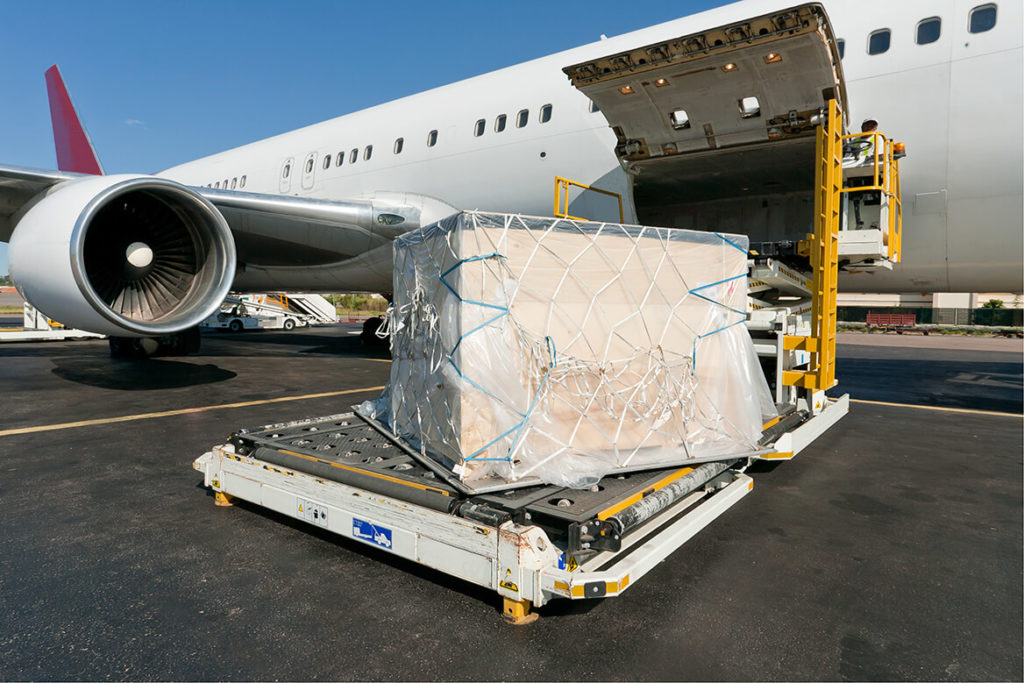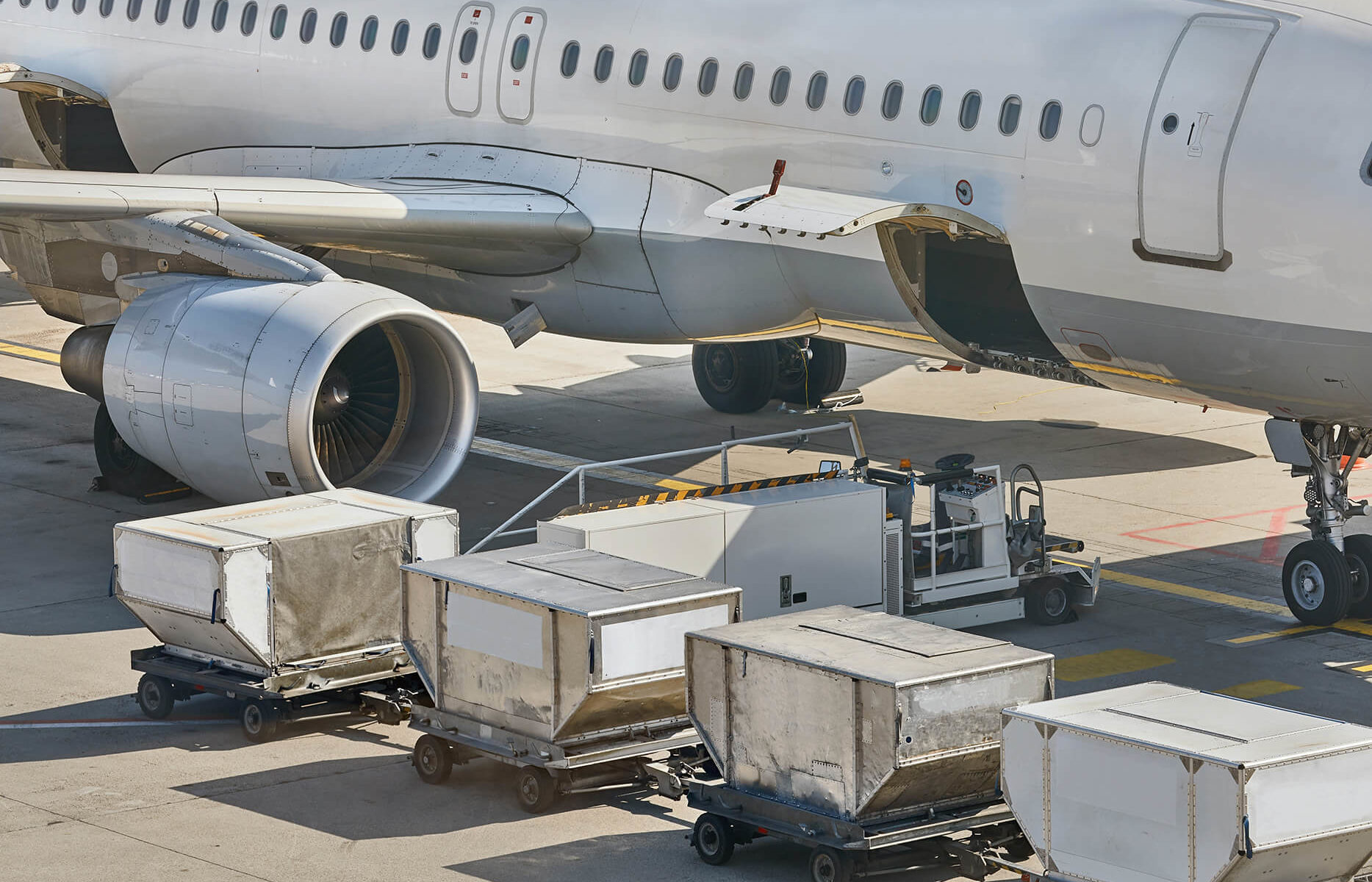The convenience and speed offered by air transport has meant that more and more companies are turning to it to move their goods. In order for these goods to arrive safely and in good condition, pallets or air containers are used, which are designed to fit into the fuselage of the aircraft.
These methods allow them to be grouped together in a single large-volume unit, making their handling much easier and faster, both in loading and unloading.
However, although pallets are equally practical, we want you to know more about air containers.

Containers for efficient air transport
As we have already mentioned, overhead containers allow goods to be grouped in a single unit, optimising space and facilitating handling. These containers are also known as ULD (Unit Load Devices), and the International Air Transport Association (IATA) is the body responsible for establishing their technical specifications.
In each of these containers it is possible to find the following differentiated parts:
- Commercial logo.
- Technical specifications: plates with technical information, official seals and approvals, indications on the weight and dimensions of the goods, etc.
- Documentation pocket: for storing the documentation that must accompany the container throughout its transport.
Types of air container
Air containers could be considered the equivalent of sea containers. However, the former have a greater variety of shapes and sizes, due to the different types of cargo aircraft that can be used.
According to their characteristics, we can classify standard air containers as follows:
- IATA AKE standard container: one of the most commonly used in air transport. It is made entirely of aluminium, opens on one side and closes with a flap.
- IATA AAP standard container: made entirely of aluminium and can be adapted to load garments with hangers inside. Some of these containers are equipped with security doors. It opens on one side and closes with a flap and a net with straps. It is also one of the most commonly used types of overhead containers.
- IATA AMA standard container: container made of aluminium, adaptable to load garments with hangers. It opens on one side and closes with a flap and a net with straps. Some are equipped with security doors. Similar to the IATA AAP, but with a larger capacity. It is also one of the most commonly used.
- IATA AMP standard container: made of aluminium with an opening on one side and closing with a flap and net with straps. It can hold garments with hangers inside and some have security doors. Its capacity is between that of the IATA AAP and IATA AMA.
- IATA AKH standard container: made entirely of aluminium and with side opening. Easy to handle by forklift.
- IATA AKN standard container: aluminium container with opening on one side and closing with a double metal door. It has a modular panel adapted for garments with hangers and can be sealed. It can also be easily handled with a forklift.
Sizes
The sizes of the different types of overhead containers are as follows:
- Standard IATA AKE container: length 156 cm, width 153.4 cm and height 160 cm. Maximum gross weight 1,587 kg.
- Standard IATA AAP container: Length 317.5 cm, width 223.5 cm and height 162.5 cm. Maximum gross weight 4,625 kg.
- Standard IATA AMA container: Length 317.5 cm, width 244 cm and height 244 cm. Maximum gross weight 6,800 kg.
- Standard IATA AMP container: Length 317.5 cm, width 244 cm and height 162.5 cm. Maximum gross weight 6,800 kg for PMD and 4,625 kg for PLD.
- Standard IATA AKH container: Length 156 cm, width 153.4 cm and height 114 cm. Maximum gross weight 1,135 kg.
- Standard IATA AKN container: Length 156 cm, width 153.4 cm and height 160 cm. Maximum gross weight 1,587 kg.
Advantages of using containers for air transport
Opting for containers for air freight transport offers numerous advantages. Among the most outstanding ones, we can mention the following:
- Low cost: by grouping different goods in these standard containers, the costs of handling goods and luggage that airlines and airports usually have are reduced.
- Easy handling: as it is a single unit load, it is much easier to handle. It also reduces the cost of transport.
- Time saving: it takes less time to move them than if they were moved individually.
Choose an efficient transport
Although it is true that air transport is one of the most efficient, the reality is that not all types of goods are suitable for it. Having professional advice such as that of WebTrans can help you find the best option for your company.
Know all our services, take a look at our website.

